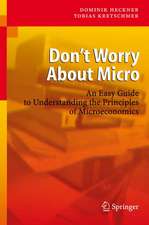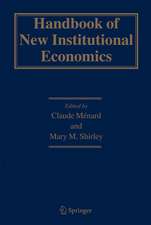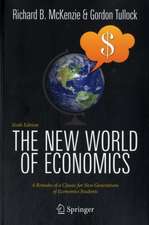Economic Theory: A Critic’s Companion
Autor Marcel Alfons Gilbert van Meerhaegheen Limba Engleză Paperback – 4 noi 2011
Preț: 378.71 lei
Nou
Puncte Express: 568
Preț estimativ în valută:
72.47€ • 75.82$ • 60.20£
72.47€ • 75.82$ • 60.20£
Carte tipărită la comandă
Livrare economică 02-16 aprilie
Preluare comenzi: 021 569.72.76
Specificații
ISBN-13: 9789400987760
ISBN-10: 9400987765
Pagini: 140
Ilustrații: X, 126 p.
Dimensiuni: 152 x 229 x 7 mm
Greutate: 0.2 kg
Ediția:Softcover reprint of the original 1st ed. 1980
Editura: SPRINGER NETHERLANDS
Colecția Springer
Locul publicării:Dordrecht, Netherlands
ISBN-10: 9400987765
Pagini: 140
Ilustrații: X, 126 p.
Dimensiuni: 152 x 229 x 7 mm
Greutate: 0.2 kg
Ediția:Softcover reprint of the original 1st ed. 1980
Editura: SPRINGER NETHERLANDS
Colecția Springer
Locul publicării:Dordrecht, Netherlands
Public țintă
ResearchCuprins
1 Introduction.- 1. Terminology.- 2. Originality.- 3. Ideology.- 2 The theory of the consumer’s behaviour.- 1. Gossen’s ‘laws’.- 2. The indifference curves.- 3. The influence of the other consumers.- 4. Demand.- 5. Consumption and saving.- 6. Conclusion.- 3 The theory of producer’s behaviour.- 1. Substitutability and complementarity of production factors.- 2. The optimum combination of factors for a given level of output.- 3. Optimum level of production.- 4. Supply and revenue.- 5. The investment decision.- 6. Conclusion.- 4 The theory of pricing.- 1. Marginalism.- 2. Corporate objectives.- 3. Instruments of corporate policy.- 4. Price interdependence.- 5. The ‘laws’ of supply and demand.- 6. Conclusion.- 5 The theory of income distribution.- 1. The labour market.- 2. The market for loanable funds.- 3. Conclusion.- 6 The theory of the general level of national income and of prices.- 1. Monetary equilibrium and the level of national income.- 2. Inflation.- 3. The transactions equation and the quantity theory.- 4. The cash-balance theory.- 5. Conclusion.- 7 The theory of economic growth.- 1. The Harrod-Domar theory.- 2. The neoclassical theory.- 3. W. Rostow’s theory.- 4. The factors of economic growth.- 5. Conclusion.- 8 The theory of international trade.- 1. The theory of comparative cost.- 2. The Heckscher-Ohlin theory.- 3. Trade and economic growth.- 4. The theory of purchasing-power parity.- 5. The theory of balance-of-payments equilibrium.- 6. Conclusion.- 9 The limited practicability of the theory.- 1. Isolation from other sciences.- 2. Unrealistic hypotheses.- 3. Mathematization of economics.- 4. Conclusion.- 10 The significance of economic theory.- 1. Determinism.- 2. Predictability.- 3. Theory or method?.- 4. Conclusion.- Appendix EconomicDoctrines.- 1. Ancient and Medieval times.- 2. Mercantilism.- 3. Physiocracy.- 4. The classical school.- 5. The historical school.- 6. Socialism.- 7. The Austrian school and the Lausanne school.- 8. Neoclassicism and the Swedish school.- 9. Institutionalism.- 10. The Keynesian ‘revolution’ 104.- 11. J.A. Schumpeter.- 12. Neo-Marxism.- 13. Neoliberalism.- Endnotes.















